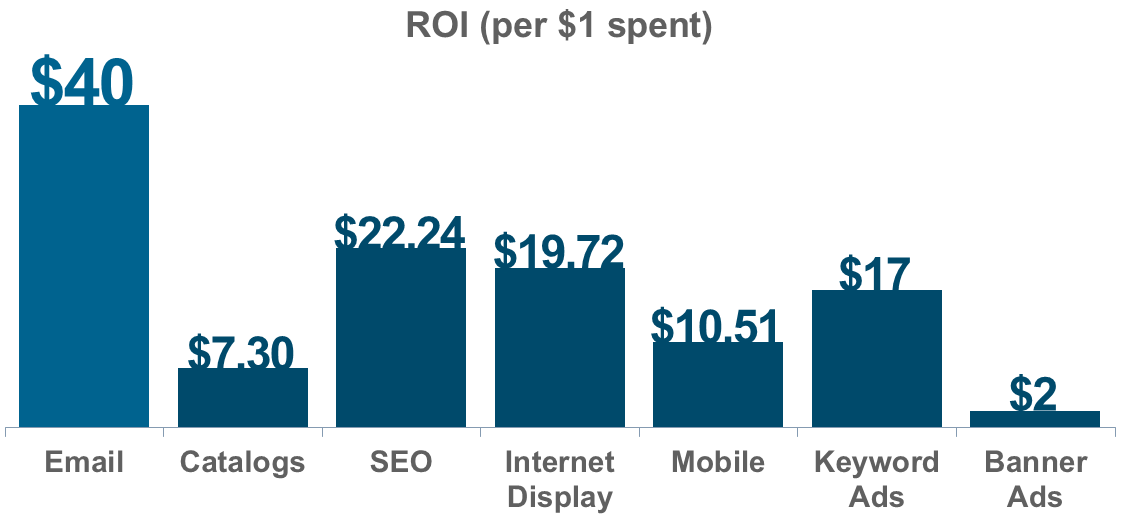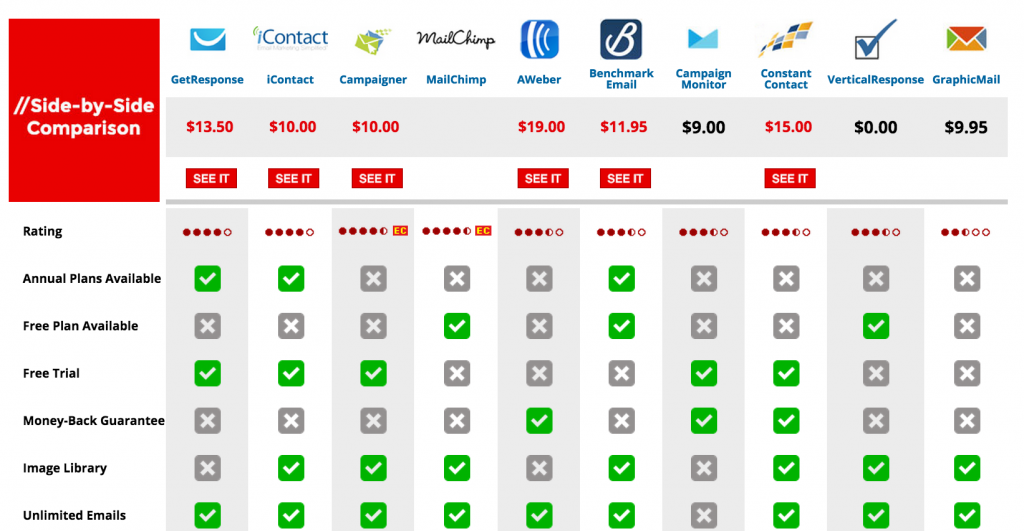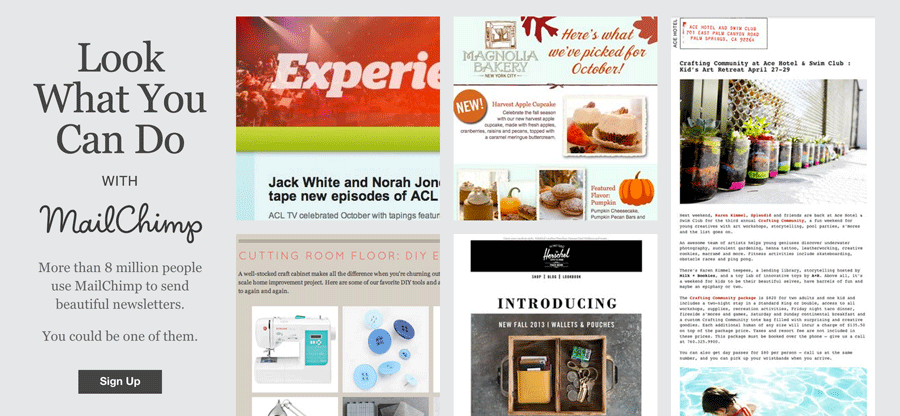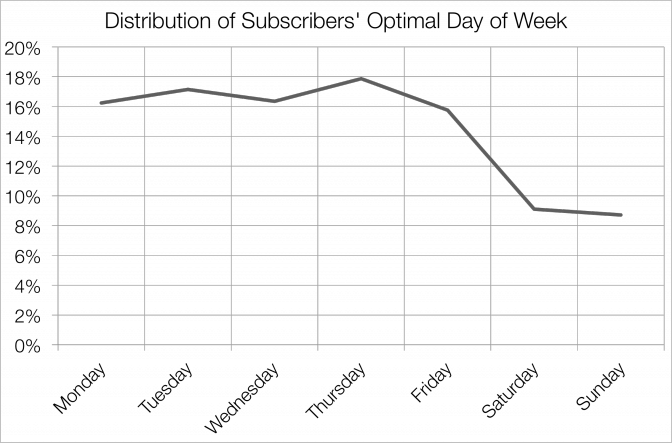 With so many modern channels for marketing, such as social media, content marketing and online advertising, are email newsletters still relevant?
With so many modern channels for marketing, such as social media, content marketing and online advertising, are email newsletters still relevant?
According to the Direct Marketing Association, email has the highest ROI at 40x compared SEO, ads and other activities. If you haven’t incorporated email marketing into your inbound marketing activities, this blog post will help you get started.
1. Pick a Newsletter Provider
A newsletter provider is the software you use to manage your subscriber lists, create and send your newsletter. There are many email marketing apps available. MailChimp, which is free up to 500 subscribers, is a great option if you’re just starting out. If you have budget, you can also try Campaign Monitor (starting from $9/month) or Constant Contact (starting from $15/month).

2. Determine Your Objectives
Just like any other marketing campaign, ensure you understand and know the goal of your email marketing campaigns. For example, is it to get people back to your website to buy something, or is it to keep in touch with leads over a long sales cycle? It’s possible that both of those are goals, but within each email, it should be clear to the recipient what you want them to do after reading the email.
Examples of campaigns include:
- New offers, a sale or deals
- Keeping in touch and industry updates
- Company announcement or news
Based on the purpose of the email newsletter, you want to modify the content, layout and sending time of the email to achieve your the objectives.
3. Find Content
If you’re sending out an email with an offer, like a coupon, deal or free download, then the contents of the entire email should be focused on that offer, with that as the only call-to-action (or link) in the entire email.
However, if you’re doing a monthly newsletter, then you have to give more thought to what you’ll include in your newsletter. Here are a few items that are great to include in general company newsletters:
- Industry news – Curate the most relevant and interesting links from industry blogs, Twitter accounts, or other sites you read to keep up-to-date on the industry
- Company blog posts – Include thumbnails and short excerpts to articles you’ve published on your company site
- Industry events – List a few upcoming workshops, conferences, meetups or webinars. You can find these on sites such as Meetup.com or through events your partners and customers may be having.
To help create visual interest, remember to use thumbnail images for articles, for the header or the background. Free stock photo sites like StockSnap.io or Pexels have many modern and high-quality images you can use for commercial purposes without providing attribution.
If you need inspiration on how to layout your newsletter, here’s list of great email marketing examples, or check out MailChimp’s design gallery. Most email newsletter providers have a drag and drop interface that makes it easy to build your template, so it shouldn’t be difficult to create a layout similar to a newsletter you like.

4. Set Up Your Mailing List
Who should you include on the mailing list for your first newsletter?
- People who signed up for your newsletter. If you’re using an email newsletter service such as MailChimp, you may already be collecting email signups through a form on your blog or website, in which case these email addresses should have been automatically added to your list. You can also collect email signups with plugins such as SumoMe or other popovers. If the plugin doesn’t integrate with your email newsletter provider, you have to manually add or import the emails to the list.
- Current customers and prospects. Don’t forget to include the contacts you interact with, such as customers, past customers, prospects and business partners you may have. You may not want to automatically add them to your list if they haven’t explicitly subscribed, but don’t be shy to ask when you are speaking with them, or to send them an email asking if they’d like to subscribe first. Don’t forget that anti-spam laws apply to your email newsletters; customers have implied consent to be contacted and prospects can be contacted up to 6 months after you last had contact. If you’re sending emails to Canadians, see our blog post on CASL (Canada’s Anti-Spam Legislation).
- Employees and partners. Including your team and business partners is a great way to keep these stakeholders in the loop with what is happening in the the industry and the business.
If you don’t have many recipients on your list, don’t feel discouraged. You can use this as an opportunity to get familiar with how to set up and send out newsletters because if you make a mistake, less people will know about it. It takes time to build a newsletter of hundreds or thousands of subscribers. Even if you don’t have many subscribers, use the time now to get into the habit of sending a newsletter out on a regular basis and for testing what content resonates with your recipients.
5. Schedule Your Newsletter
Picking the right time, or at least not the wrong time, to send your newsletter increases the likelihood your newsletter will be opened and that recipients will click the deal or links you’re sending.
According to a study based on MailChimp’s Send Time Optimization System, in general, the best times to send your newsletter is between Monday and Thursday, from 10am to 2pm. Of course, every business’ customers are different and the habits and schedules of your recipients may vary from the norm. So we encourage you test different days and times of the week once you have your newsletter up and going. If you have at least a few hundred subscribers to experiment with, split your subscribers up into groups and try sending the same email at different times to compare what the open and click rates are.

For more tips on creating email newsletter campaigns, sign up for our monthly newsletter here.
